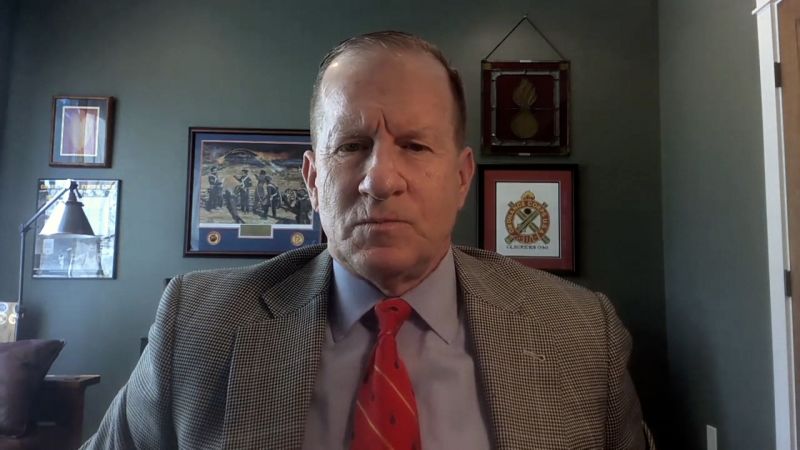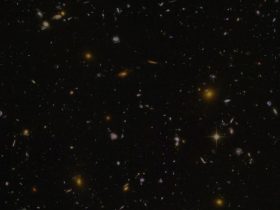Russian troops have placed “objects resembling explosives” on roofs at the Zaporizhzhia nuclear power plant (ZNPP), Ukrainian President Volodymyr Zelensky said in a video address Tuesday that instantly sparked concerns around the world.
“Perhaps to simulate an attack on the plant. Perhaps they have some other scenario,” Zelensky speculated.
But on one point, he was unequivocal: “In any case, the world sees – can’t but see – that the only source of danger to the Zaporizhzhia nuclear power plant is Russia and no one else.”
Russian President Vladimir Putin has long flirted with the nuclear specter since mounting his invasion of Ukraine. Zelensky has now raised the prospect that he may cause a nuclear incident not by firing warheads, but by turning the ZNPP itself into a weapon.
But what would happen if the explosives that Ukraine claims to have found were detonated? Could Zaporizhzhia become another Chernobyl? And what good, if any, would this do for Russia in its war on Ukraine?
Here’s what you need to know.
What is the current situation?
In June, Zelensky said Ukrainian intelligence had “received information that Russia is considering a scenario of a terrorist attack at the Zaporizhzhia nuclear power plant (ZNPP),” and that the alleged attack would involve “radiation leakage.”
Ukraine’s military intelligence chief, Kyrylo Budanov, told state TV that the Russians had mined the Zaporizhzhia plant. “The most horrifying part is that a cooler is mined. If they disable it by blowing it up… there is a great chance that there will be significant problems.” The Kremlin denied the allegations.
Zelensky significantly escalated this rhetoric in his address on Tuesday night. “The whole world must now realize that common security depends entirely on global attention to the actions of the occupiers at the plant,” he said.
As Ukraine’s counteroffensive attempts to reclaim territory captured by Russia, including in the Zaporizhzhia region, analysts have said that Russia may be mounting a false flag operation – a military action designed to look like it was perpetrated by the opponent. That is, Russia may claim that any explosion at the power plant was the result of reckless Ukrainian shelling, rather than its own explosives.
Throughout the war, Russia has warned that Ukrainian shelling around the plant could lead to a radioactive incident.
Kremlin spokesperson Dmitry Peskov told reporters Wednesday that the situation at the plant is “quite tense,” but tried to deflect criticism, claiming that the potential for “sabotage by the Kyiv regime” is “high” and could have “catastrophic consequences.”
“Therefore, of course, all measures are being taken to counter this threat,” Peskov said.
The International Atomic Energy Agency (IAEA) – the United Nations’ nuclear watchdog – said in an update Wednesday that there were no visible indications of mines or explosives at the ZNPP, but requested additional access to the site for confirmation.
“Access to the rooftops of reactor units 3 and 4 is essential, as well as access to the turbine halls and some parts of the cooling system of the plant,” IAEA Director General Rafael Grossi said in a statement.
Who controls the power plant?
The ZNPP – the largest in Europe – lies along the banks of the Dnipro River, next to the town of Enerhodar. It has been under full Russian control since March last year, but is operated mostly by Ukrainian staff, who were initially forced to work at “gunpoint” by invading Russian troops, according to Petro Kotin, head of Ukraine’s nuclear power operator Energoatom.
When the war began on February 24 2022, one of the plant’s six reactor units was closed for maintenance. After Russian forces took control of the plant, the Ukrainian workers shut down the remaining units.
But fighting continued to rage around the plant last summer, to the grave alarm of the IAEA.
Grossi, claiming that “every principle of nuclear safety” had been “violated” at the plant, managed to secure his staff a visit to the site in August, while it remained under Russian control.
Grossi’s “personal diplomacy,” and the “bravery” of the staff who accompanied him on this visit, played a huge role in decreasing the chance of a nuclear accident at the plant, according to William Alberque, Director of Strategy, Technology and Arms Control at the International Institute for Strategy Studies.
The IAEA staff’s mission, Alberque said, was to “establish a precedent here, that we’re willing to get involved and to try to take this chess piece off the board.”
Is the plant still active?
Russian occupiers, however, continued to prevent Ukrainian operators from putting each of the reactors into a safer “cold shutdown” status. This means when the reactor’s temperature is below boiling point but electrical pumps moving water through the core must still keep working to cool the fuel and avoid meltdown – which requires an external power supply.
The safety of the plant was threatened further by the breach of the Nova Kakhovka dam on June 6, which lowered water levels used for cooling the plant precipitously. Ukraine accused Russia of deliberately destroying the dam – a claim that Moscow has denied. Shortly after this, the final reactor unit at ZNPP was put into cold shutdown status on June 8.
Hence, due to the actions of the IAEA and Ukrainian operating staff, the plant has been put into a more stable “cold shutdown” mode, limiting the chances of a large-scale nuclear disaster.
Could this be another Chernobyl?
“A plume will come off from the reactor where there will be radiation aerosolized,” he said. This would create a radiation zone where “you’ll have a higher chance of cancer over the next 40 years,” but will not recreate the sort of destruction seen after the meltdown of the active Chernobyl plant in 1986.
“The six reactors at ZNPP are not at all like the Chernobyl reactor and cannot, CAN NOT, have the same kind of accident,” Cheryl Rofer, a nuclear expert and former researcher at the Los Alamos National Laboratory, wrote in a blog.
“Chernobyl had a graphite moderator, and the building it was in was not the heavily reinforced concrete of the reactors at ZNPP. The ZNPP reactors have hard oxide fuel encased in metal, and are inside a stainless steel vessel. Chernobyl had no such vessel,” she added.
According to Alberque, the scale of the effects of any disaster at Zaporizhzhia would be more akin to that at Three Mile Island in Pennsylvania in 1979, rather than Chernobyl (1986) – or even Fukushima (2011).
Would a nuclear incident benefit Russia?
It is unclear how Russia would benefit from causing an explosion at the plant.
“The winds are blowing east. So it’s going to affect Russians. In terms of military effectiveness: Zero. It’s just stupid,” Alberque said. Any nuclear incident would “just be self-harm. It would just harm Russian-held territory… I don’t get the play.”
As well as not providing clear military strategic gains for Russia, causing a nuclear incident may backfire diplomatically.
The Financial Times reported that Chinese President Xi Jinping has personally warned Putin against using nuclear weapons in Ukraine, according to Western and Chinese officials.
The Kremlin denied the report, calling it “fiction.” However, it adds to the sense that Russia’s continued nuclear threats are causing reputational damage among its supposed allies.
Warring parties do not tend to raise the nuclear specter lightly. India and Pakistan, despite being locked in conflict for decades, agreed in 1988 to exclude nuclear facilities from their conflict zones, recognizing the risk that such attacks pose. They have exchanged a list of their nuclear facilities every year since 1992 to avoid any accidents.
Hence Russia’s reckless threats may contribute to further isolation on the world stage. “If Putin were to do this [cause an explosion at the ZNPP], how does India – whose line is, ‘unlike Pakistan, we’re the responsible nuclear power’ – how do they say that if we’re friends with the guy who just blew up a nuclear power plant?” Alberque said.






